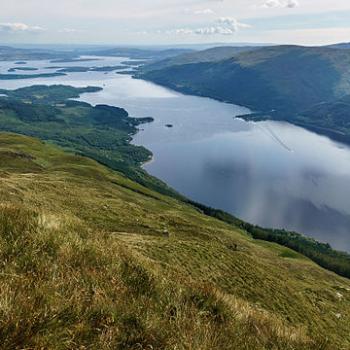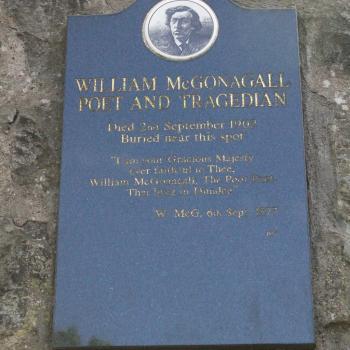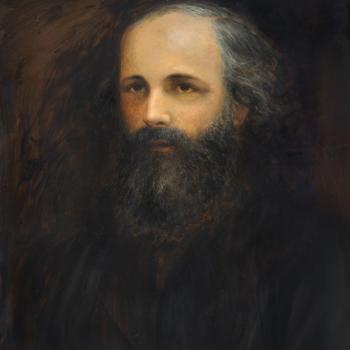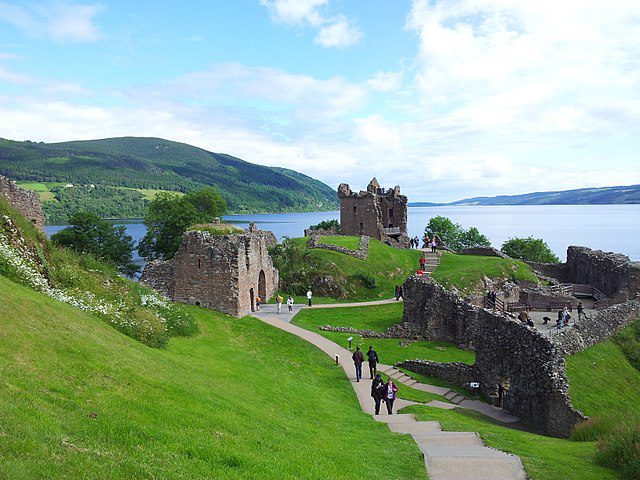
(Wikimedia Commons public domain photograph by Lorna M. Campbell)
A few folks out there in my audience continue to be deeply interested in my personal finances and, it seems, rather disturbed by my travels. So, yet again, I’m going to endeavor to set their minds at ease, even though it’s really none of their business:
My wife and I like to travel. We love history and the humanities. And, accordingly, we’ve very deliberately configured our finances in order to be able to travel. We’ve set aside a certain amount each year to make that possible. And we tend not to spend as much money on other things as we might otherwise do. For example, we have a single car between us, and the mileage on it is very high. Likewise, we’ve never put new carpet in our home since first moving in, and we haven’t redone our kitchen or redesigned our backyard.
But very conscious frugality in certain matters isn’t the only factor that facilitates our wanderings. We’re fortunate that both of us come from reasonably affluent families. Not, as my Malevolent Stalker likes to portray me, from elite privilege and wealth, but from the securely upper middle class. (My brother and I were the first people in our family line to have graduated from college.) And the generosity of our families allowed us to leave graduate school — and to get into a house — without debt. (Fellowship money and summer employment in the family construction business also helped).
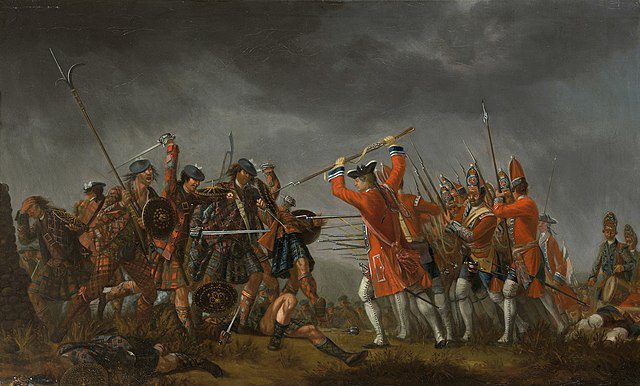
Wikimedia Commons public domain image
But let me talk specifically about this current trip:
I am, right now, accompanying a tour group on a cruise around the United Kingdom — though it both commenced in Amsterdam and will conclude there — on behalf of Bountiful Travel (the successor company to Cruise Lady). I draw no pay for doing so and invariably spend some of my own money on these trips (e.g., tips for local guides, and the like), although Bountiful Travel does cover the cost of flights and cruise for me and my wife. My principal duty on the tour is to give two informal lectures on each of the cruise’s at-sea days. I also see it as my role to go on the land tours with our group (the cost of which Bountiful Travel covers) and to join them for dinner every evening. Why does Bountiful Travel have me come along? It’s a business decision. Clearly — whether rightly or wrongly — they calculate that my coming along enhances their bottom line by attracting customers — at least sufficiently to justify their expenditures on airfare and the cruise for me and my wife.
Bountiful Travel paid our way to Europe. We came over early, though, in order to avail ourselves of the generous offer of a friend: A native of Switzerland, he still owns the home in Matten bei Interlaken in which he grew up, and he offered us the use of it. That was something that we could scarcely pass up!
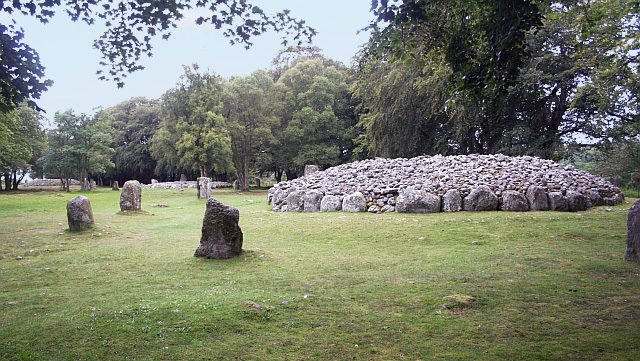
Now, I suppose that this next set of questions is of some public relevance, so I want to answer them as clearly and unambiguously as I know how to do: Does the Church of Jesus Christ of Latter-day Saints pay me for apologetics? No. Not a cent. Is it largesse from the Church that makes my travels possible? No. Not a nickel. Do donations given to the Interpreter Foundation support my travels? No. Absolutely not. I work for the Interpreter Foundation as a volunteer, as (for that matter) does my wife. In fact, my wife and I are regular donors to Interpreter.
I’m fully aware that the explanation that I’ve just given — which follows several previously-given explanations that have said essentially the same thing — won’t help my most obsessive and hostile critics. That’s sad, but it’s okay. There’s really nothing that I can do for them. They’re determined to regard everything I say as a lie and everything I do as mean-spirited and deceptive. Still, perhaps what I’ve written here will assist in calming those down who have recently expressed curiosity and concern about how I spend my money, where I get it, how much of it I may have, and how I can possibly afford to travel so often.
Today, we docked at Invergordon and, after disembarking from our ship, drove up to Inverness and the area around it. We visited Urquhart Castle and then boarded a boat to sail on Loch Ness and the Caledonian Canal. (I’ve cruised on Loch Ness at least twice before and, alas, I still haven’t seen the Loch Ness monster, or Nessie.) Thereafter, we visited an exhibition that is clearly designed to debunk belief in Nessie — which, in my case, didn’t take much. (We had already seen a distinct but analogous display quite a few years ago.) We had lunch at The Clansman, wandered around a bit in Inverness itself (where, in Leakey’s Bookshop — so many books, so little time! — I bought two used volumes that are relevant to the history of the Scottish branch of my family tree). Next, we visited the site of the tragic 16 April 1746 Battle of Culloden. And, finally, we spent some time at the intriguing Bronze Age cemetery called the “Clava Cairns” (which reminded me, curiously, of the considerably older pagan center at Gamla Uppsala, in Sweden).
I especially enjoyed our guide today, Doug Redwood, who holds a master’s degree in archaeology and is connected with the Centre for History at the University of the Highlands and Islands. He has done substantial fieldwork in the area of the Scottish Highlands and on the Isle of Skye in the Inner Hebrides to the west, and he has a particular interest in the Clava Cairns. During the hour-long ride back to our ship, he and I had a long and really enjoyable conversation about archaeological and historical matters.
Posted from the North Sea




